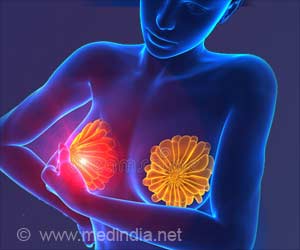Chemotherapy-induced peripheral neuropathy is a common side effect in cancer patients. Neurofeedback was found to ease pain and improve quality of life.

‘Neurofeedback is a technique in which the brain improves its function. This improves chronic chemotherapy-induced peripheral neuropathy symptoms.
’





"Chemotherapy-induced peripheral neuropathy is very common in cancer patients and there is currently only one medication approved to treat it. I'm encouraged to see the significant improvements in patient's quality of life after treatment. This treatment is customized to the individual, and is relatively inexpensive, non-invasive and non-addictive." said Prinsloo. Chronic chemotherapy-induced peripheral neuropathy (CIPN) is a common side effect of chemotherapy, often affecting 71 to 96 percent of patients after a month of chemotherapy treatment. Peripheral neuropathy is a set of symptoms such as pain, burning, tingling and loss of feeling caused by damage to nerves that control the sensations and movements of our arms and legs.
Neuroplasticity is the ability of the brain to form new connections and change existing ones. This study demonstrated that neurofeedback induces neuroplasticity to modulate brain activity and improve CIPN symptoms.
The study enrolled 71 MD Anderson patients of all cancer types; all were at least 3 months post chemotherapy treatment and reported more than a three on the National Cancer Institute's neuropathy rating scale.
Study participants completed assessments that determined the brain activity related to their pain, pain perception and quality of life. Those were then randomized to receive neurofeedback, or to a control group that did not receive treatment. Patients in the neurofeedback group attended 20 sessions of neurofeedback training where they played a computer game that rewarded them when they modified their brainwave activity in the affected area. They then learned to modify the activity without an immediate reward from the game.
Advertisement
After treatment, 73 percent saw improvement in their pain and quality of life. Patients with CIPN also exhibited specific and predictable EEG signatures that changed with neurofeedback.
Advertisement
The study will be presented at the annual meeting of the American Psychosomatic Society, held March 9-12 in Denver, Colorado.
Source-Newswise















